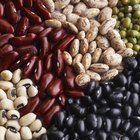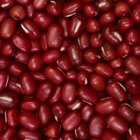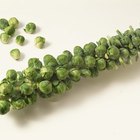SuzanaMarinkovic/iStock/GettyImages
Slow-cookers are known for producing tender juicy pot roasts, stews and other meat-based main dishes. Fewer cooks know that a slow-cooker can produce delicious vegetables as well, and some kinds of vegetables slow-cook better than others. Excess liquid, from vegetables or other recipe ingredients, can produce soupy, bland results. Know the characteristics of the best slow-cooked vegetables to broaden the range of nutrients and flavors in your family meals.
Beans Are a Breeze
Dried peas, chickpeas and lentils are excellent candidates for slow-cooking and economical, too. You may presoak beans overnight if you find them gassy or hard to digest, but experienced cooks regard this as optional for slow-cooking. Allow six to eight hours on a low setting for tender beans. If you have a large 6- or 7-quart capacity cooker, cook as many as 2 pounds of beans and freeze some for additional meals. Vary cooking liquids and limit the salt, if necessary.
Root for Root Vegetables
The dense tissues of root vegetables respond well to the sealed moist heat of a slow-cooker. The most difficult part of cooking root vegetables is resisting the urge to add water. Beets; potatoes, both white and sweet; onions; and turnips all contain enough natural liquid to literally stew in their own juices, and waterless cooking intensifies flavors. Spoonfuls of vinegar, honey or other liquid seasonings are enough to create a juicy glaze. Add a cupful or two of water, chicken broth or vegetable broth only if you want a root-vegetable soup.
No-Fuss Squash
Hard winter squashes take lots of prep and oven time when cooked by conventional methods. Thick-walled squashes like butternut -- skin on and wrapped in foil -- yield tender, juicy meat after four to six hours in the slow- cooker, depending on the temperature. Cut chunks of larger squashes, such as Hubbard or pumpkin, wrap them in foil and cook them the same way. The resulting puree can be frozen for future use.
Dark Leafy Greens
The coarsely textured, long-cooking greens characteristic of Southern cooking bring valuable nutrients to family diets. Collards, kale and mustard greens, traditionally simmered all day on the back of the stove with a piece of fatback, benefit greatly from the lower-fat, lower-sodium processing in a slow-cooker. Steamed tender in their own moisture and seasoned with only small amounts of bacon, onion and herbs, old-time greens lose their greasiness and much of their off-putting bitterness, while retaining their nutrients and deep richness of flavor.
Summer Vegetables
Slow-cooked juicy summer vegetables sometimes present the dilemma created by too much of a good thing. Even without added liquids, results can be more like soup than a side dish. Slow-cook vegetables like tomatoes, onions and peppers when you want intensely flavored sauces, like spaghetti sauce or salsa. For a vegetable stew like ratatouille, diminish the wateriness of the onions, eggplant, summer squash and tomatoes by a quick saute in olive oil before slow-cooking. Slow-cook summer vegetables when you have a big harvest that is freezer-bound.
Related Articles

Steaming vs. Boiling vs. Baking Carrots

Time Required to Cook Beans in a Crock ...

How to Steam Cook Cabbage

How to Cook Fresh Turnip Greens

How to Soak Adzuki Beans

How Long Does It Take to Steam a Yam?

Can You Boil Broccoli & Carrots at the ...

How to Rehydrate Dried Herbs

How to Cook Brussel Sprout Greens

How to Store Carrots in the Refrigerator

How to Soften Beans After Cooking

Can You Steam Turnips?

How to Blanch Collard Greens

How to Prepare Parsnips
How to Prepare a Beef Chuck Blade Roast

How to Keep Peeled Vegetables From ...

The Difference in a Pot Roast and a ...
How to Cook Brisket Slowly With a ...
Does Slow Cooking Take Nutrients Out of ...

How to Rehydrate Chickpeas
References
Writer Bio
Janet Beal has written for various websites, covering a variety of topics, including gardening, home, child development and cultural issues. Her work has appeared on early childhood education and consumer education websites. She has a Bachelor of Arts in English from Harvard University and a Master of Science in early childhood education from the College of New Rochelle.